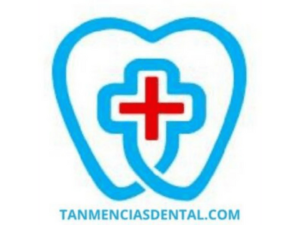Eco-toothbrushes are changing the way we think about brushing our teeth.
They reduce waste and use better materials for the planet.
Most are made from bamboo or recycled plastic instead of new plastic.
These brushes help people keep their teeth clean while also protecting the environment.
We’ll explain how they work and why they are important.
1. The Environmental Impact of Traditional Plastic Toothbrushes
Traditional toothbrushes are made with plastic that does not break down easily.
Each year, billions of them are thrown away and end up in landfills or oceans.
This creates long-term pollution and harms animals like fish and birds.
Most cities do not recycle toothbrushes because they are made from mixed materials.
Switching to Eco-Toothbrushes helps reduce this growing problem.
🦷 Why Switching to an Environmentally Friendly Electric Toothbrush Can Reduce Your Carbon Footprint
2. Materials Innovation: Bamboo, Recycled Plastics, and Plant-Based Bristles
Many Eco-Toothbrushes use bamboo for the handle because it grows quickly and doesn’t need chemicals.
Some brands also use recycled plastic, which helps keep waste out of landfills.
The bristles can be made from plant oils like castor beans instead of petroleum.
These materials are safer for the environment and work just as well.
Using them means fewer new resources are needed.
🦷 What Foods and Drinks to Avoid for Healthy Teeth
3. Biodegradability: Eco-Toothbrush Handles That Decompose Naturally
Bamboo handles can break down in compost in just a few months.
Some companies use special bioplastics that also decompose under certain conditions.
This is a big improvement over plastic, which can last for centuries.
People can put bamboo handles in their garden compost piles after removing the bristles.
This helps reduce trash and makes waste easier to manage.
🦷 How Technology Is Changing the Way We Experience Dental Exams And Cleanings
4. Performance Comparison: Do Eco-Toothbrushes Match Traditional Ones?
Eco-toothbrushes clean teeth just as well when used correctly.
They come in the same shapes and sizes as regular toothbrushes.
Many have soft or medium bristles, which dentists often recommend.
People who try them say they feel similar to plastic brushes.
With proper brushing habits, the results are equally effective.
🦷 How to Choose the Best Clinic for Orthodontic Treatment In Marikina
5. Reduced Carbon Footprint: Sustainable Materials and Local Sourcing
Using local bamboo or recycled plastic helps cut down on shipping and pollution.
Some companies produce their brushes close to where they are sold.
This lowers the carbon footprint by reducing long travel distances.
It also means fewer emissions from trucks, ships, or planes.
Local production can support nearby farms and create jobs.
🦷 What Are the Top Innovations in Modern Dental Toothbrushes?
6. Innovations in Bristle Technology: Bio-Based Nylon and Charcoal-Infused Designs
Some Eco-Toothbrushes use nylon made from plants instead of oil.
These bristles clean teeth well and are better for the planet.
A few brands add charcoal to the bristles, which may help reduce bad breath and bacteria.
Other companies are testing new materials that break down more easily.
These changes make toothbrushes healthier and more eco-friendly.
🦷 The Role of Oral Prophylaxis in Preventing Gum Disease
7. Packaging Solutions: Plastic-Free and Compostable Options
Many Eco-Toothbrushes come in cardboard boxes with no plastic.
Some use compostable bags made from cornstarch or similar materials.
A few companies print with water-based inks to avoid harmful chemicals.
This kind of packaging is easier to recycle or compost.
It reduces waste before the brush is even used.
🦷 How Much Does It Cost To Fix Chipped Tooth?
8. Consumer Education: Proper Disposal and Recycling of Eco-Toothbrushes
To get the most benefit, people need to know how to throw away Eco-Toothbrushes properly.
Bamboo handles can usually go in compost after removing the bristles.
Some parts may still need to go in the trash if they are not biodegradable.
Clear instructions on packaging help people make the right choice.
Better education makes these brushes even more helpful to the planet.
🦷 How Braces and Gingivitis Are Connected: What You Need to Know
9. Market Growth: From Bamboo Brushes to Sustainable Electric Models
Eco-toothbrushes are now sold in more stores and online shops.
Some companies have developed electric models with refillable or recyclable heads.
These products let more people make eco-friendly choices without losing features.
The market is expected to grow as more people care about sustainability.
New designs are making green options easier to choose.
🦷 How Much Does It Cost For Filling Cavities?
10. Future Developments: Fully Biodegradable Bristles and Beyond
Researchers are working on bristles that break down just like the handles.
Some ideas include brushes paired with toothpaste tablets to avoid plastic tubes.
Others are testing reusable handles with replaceable heads to cut waste.
Companies are also finding ways to recycle every part of the brush.
These efforts will make Eco-Toothbrushes even more earth-friendly.
🦷 Family-Oriented Dental Clinic in Marikina
👨⚕️ Conclusion
Eco-Toothbrushes offer a smart way to care for both teeth and the planet.
They reduce waste, use better materials, and still work well.
More people using them means less harm to the environment.
With new improvements on the way, brushing can stay both effective and eco-friendly.
This simple switch can lead to big benefits for our world.
😊 Self-Promotion
Come visit us at Tan-Mencias Dental Clinic, located at 44 G. Del Pilar Street, Parang, Marikina City!
We’re here to help you keep your smile healthy and bright.
If you have any questions or want to book an appointment, you can call us at 0917 145 1074.
You can also send us a message through our Facebook page or our website’s contact form.
We look forward to seeing you and taking care of your teeth!

